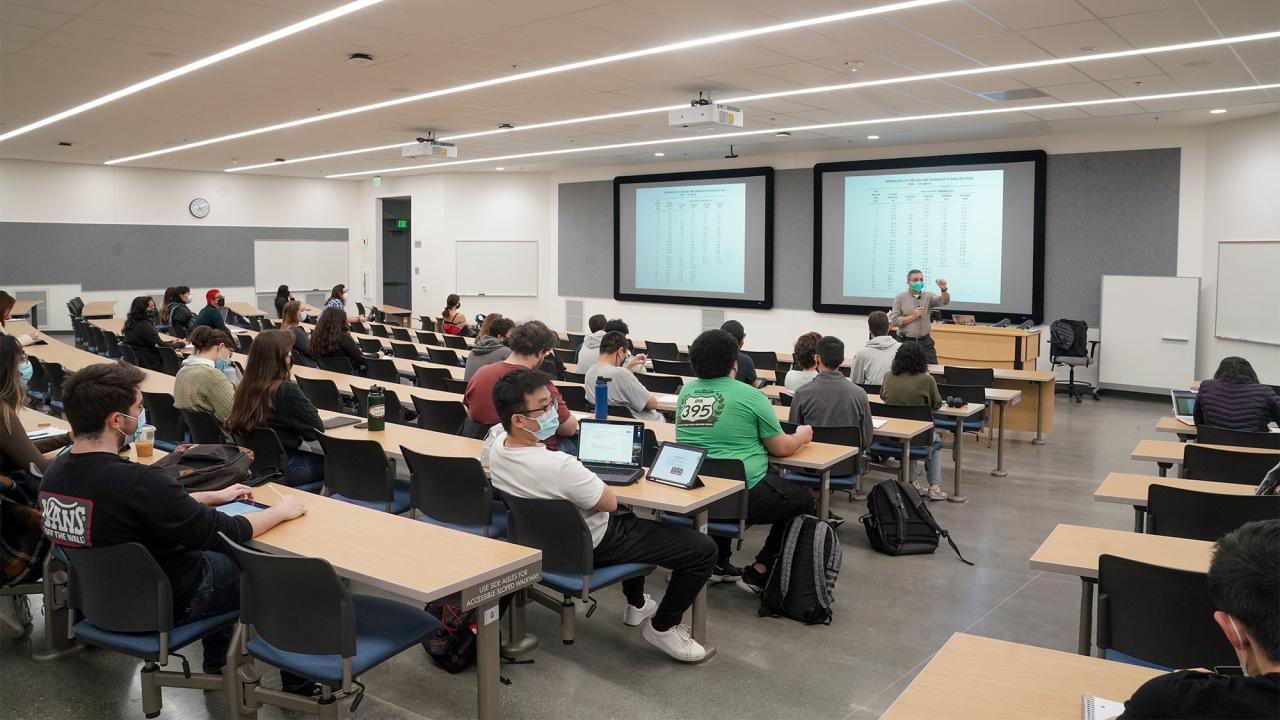There are plenty of places on campus to study, but fourth-year civil engineering major Lizzet Sanchez chose a small breakout room in the Teaching and Learning Complex last month because of some of the new building’s unique features.
The room has windows looking down into a 426-seat lecture hall, which Sanchez said helps her feel more focused on her work because she can see students in the act of learning. She also said she appreciates how the building has plenty of outlets, whiteboards, and “nooks” for both individual and group study.
Sanchez was responding to questions from Kem Saichaie — who was leading a small tour group in April through the Teaching and Learning Complex, or TLC — about why she’d chosen this room to study. Coincidentally, the student pointed out many of the features of the TLC that Saichaie had referenced during the tour.
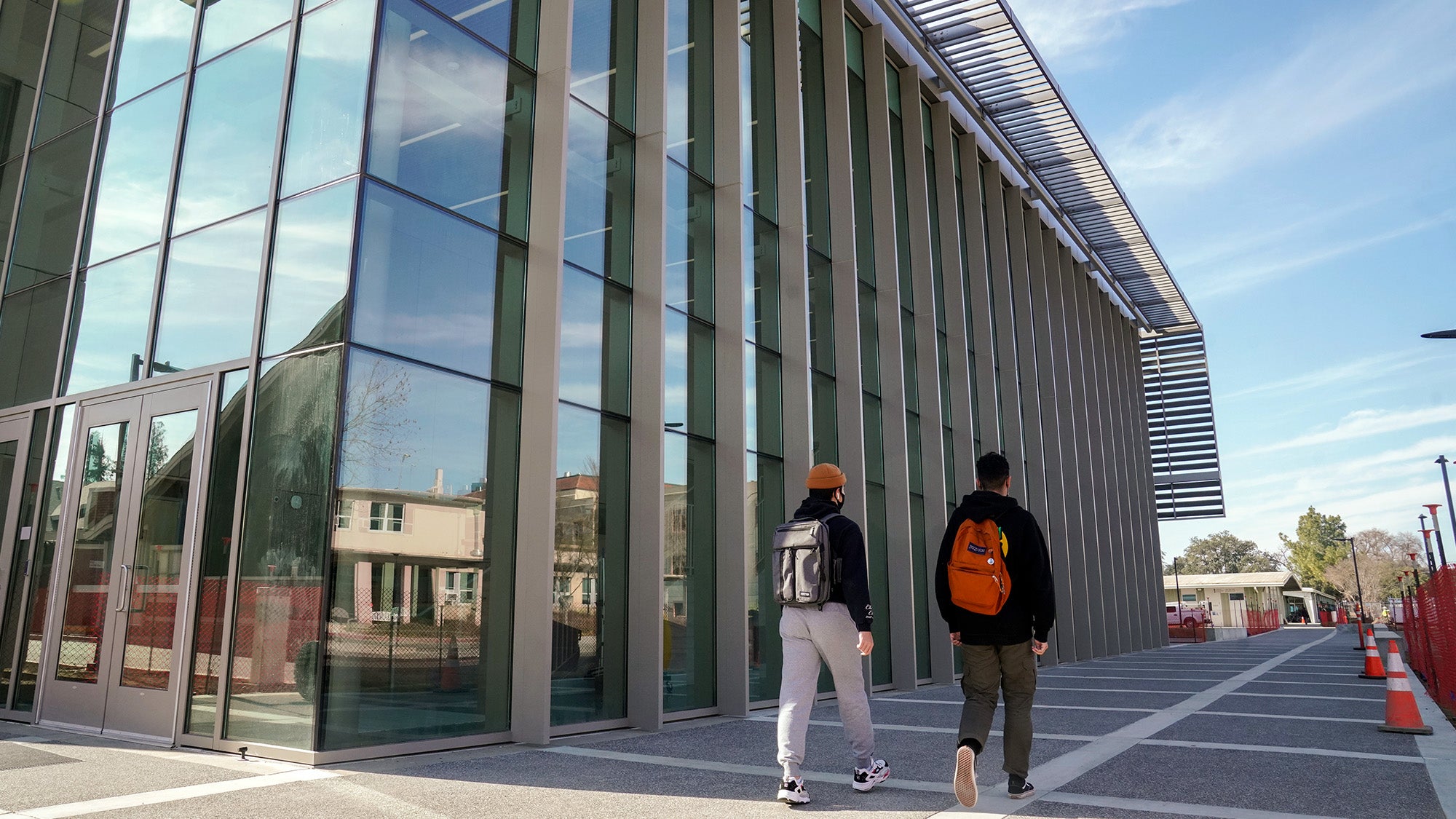
‘Thinking about space intentionally’
Saichaie, the director of learning and teaching at the UC Davis Center for Educational Effectiveness told tour group members that the building is the first new general classroom building in 50 years. “Traditional classrooms are hard to (facilitate interaction in),” he said. “We aim to change the way we teach.”
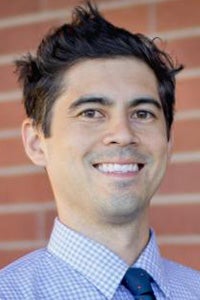
The $86 million building opened at the start of this quarter.
The TLC currently boasts three floors of classrooms, lecture halls and study spaces. The fourth floor is currently under construction and is expected to be completed this summer. It will include 12,000 square feet of “open offices that will support undergraduate education,” according to a Design and Construction Management update.
“Thinking about space intentionally is what this building was designed on.” — Kem Saichaie, director of learning and teaching, Center for Educational Effectiveness
One of many eye-catching features of the building is the abundance of natural light. The hallways and rooms contain plenty of windows which “allow students to be seen learning,” Saichaie said, which “enforces the social aspect of learning.” There are quarter-domes in the ceiling with lighting that emulates the time of day, and wooden ceiling beams and soft colors that contribute to the California feel.
Arguably the building’s most interesting features are the modern lecture halls and classrooms, like a lecture hall filled with swivel chairs that can turn around completely and allow for discussion among students. Saichaie explained that the floor’s slope of this 173-person hall is very gradual for “equity (purposes), so that people are at a more eye-to-eye level when talking” rather than some towering over others. This creates a level of comfort and promotes interactions.
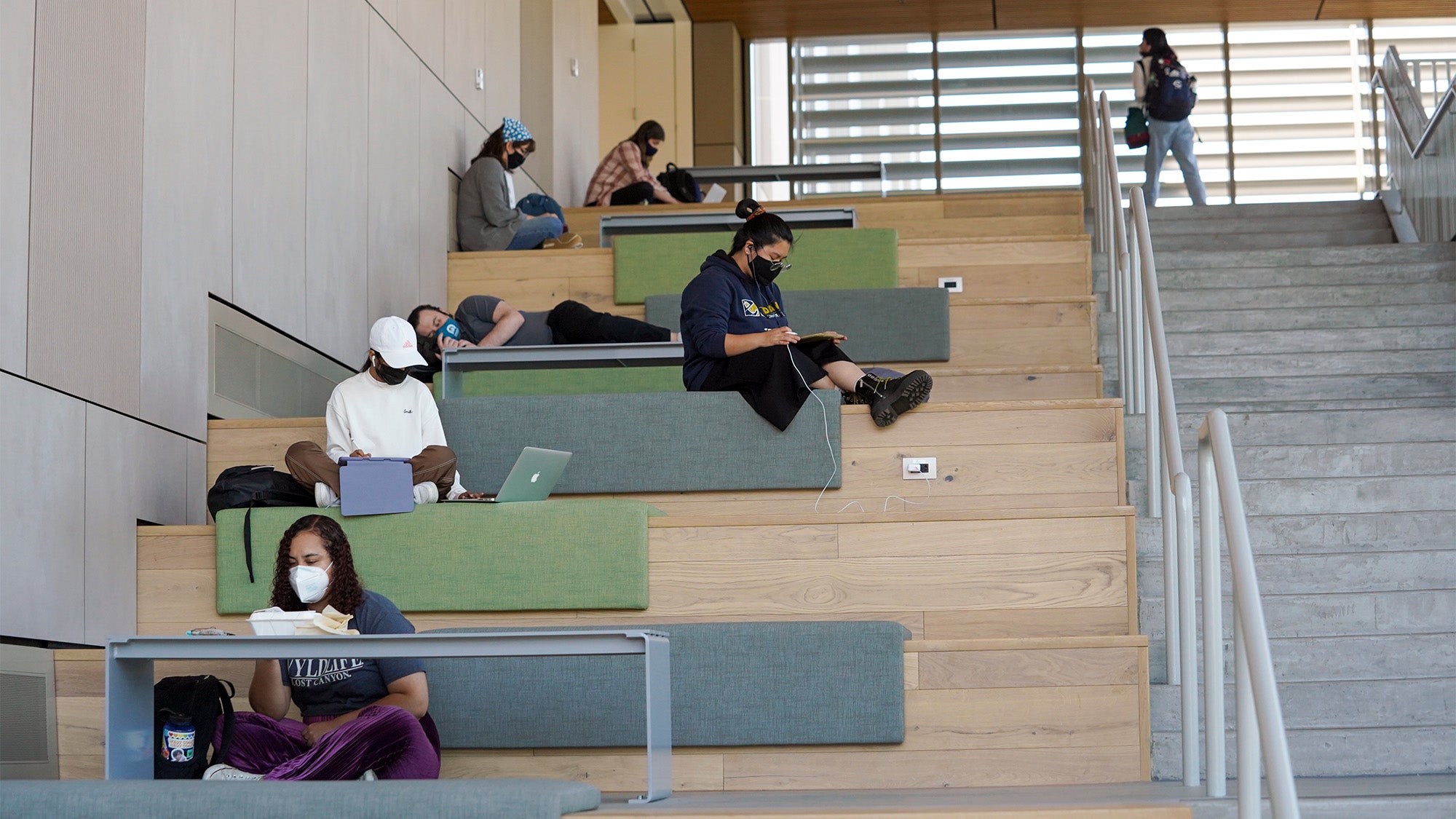
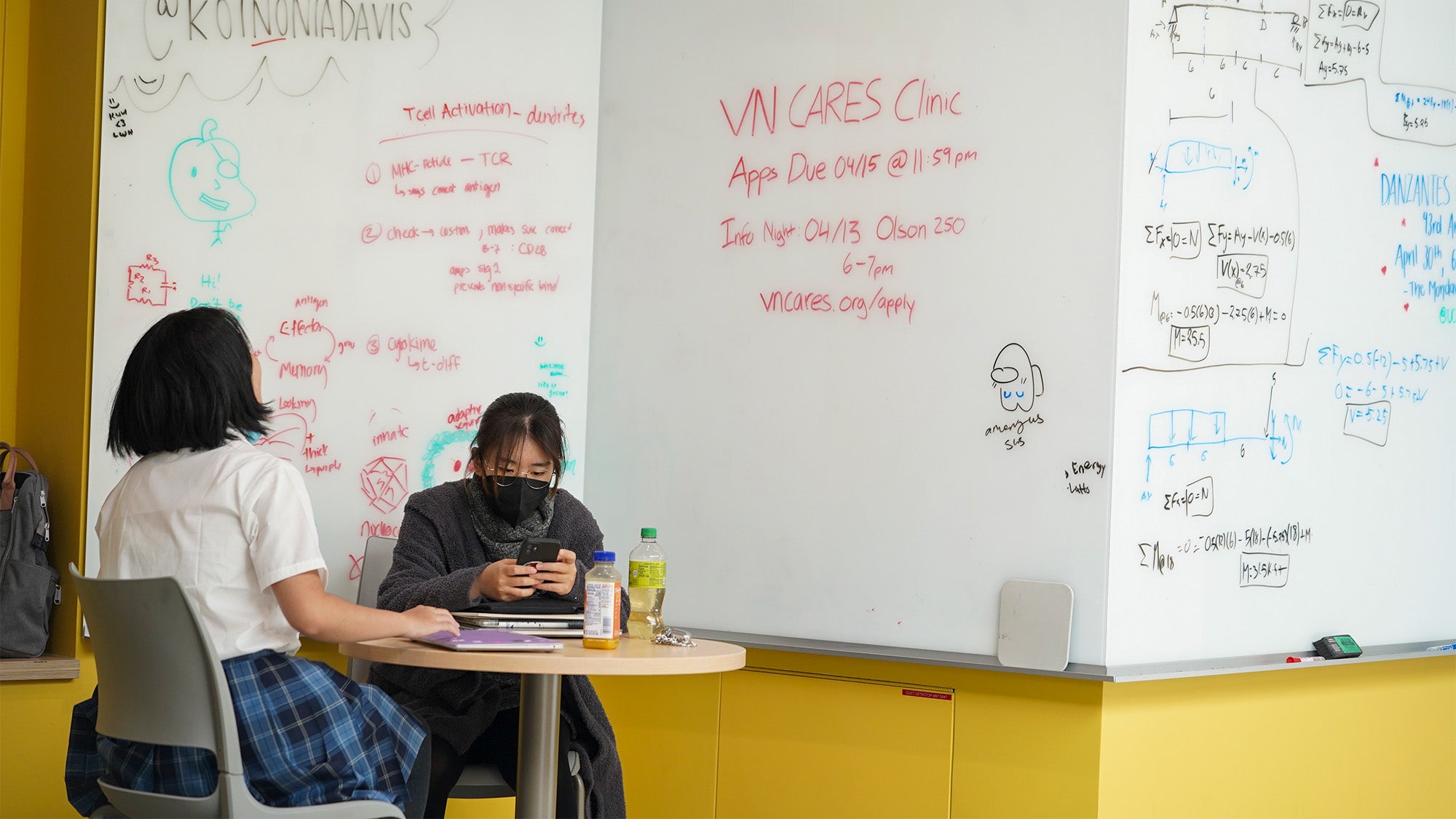
Room 1215, a general assignment classroom, is one of the “most innovative rooms on campus,” Saichaie said. While each room in the TLC is equipped with lecture-capture technology and cameras that connect to Zoom, 1215 has multiple small projectors that can show different slides on combination whiteboard/screens.
Additionally, the tables can be rolled into multiple configurations, with the instructor able to be in the middle of the table groups, promoting even more interactivity. And the tables include “huddle-boards,” small whiteboards used by students at their desks to work out problems or do group activities.
Besides the classrooms and the lecture halls, the TLC provides a social hub for students, thanks to its prime location right outside the Silo Unitrans terminal. The concrete stadium stairs outside the southwest side of the building — shaded by solar panels — have tables outside for gatherings. Another popular study spot is the interior stadium stairs on the north side of the building, which have outlets and cushions so students can either relax with friends or get some work done while waiting for their classes to begin.
So, how can I teach in this building?
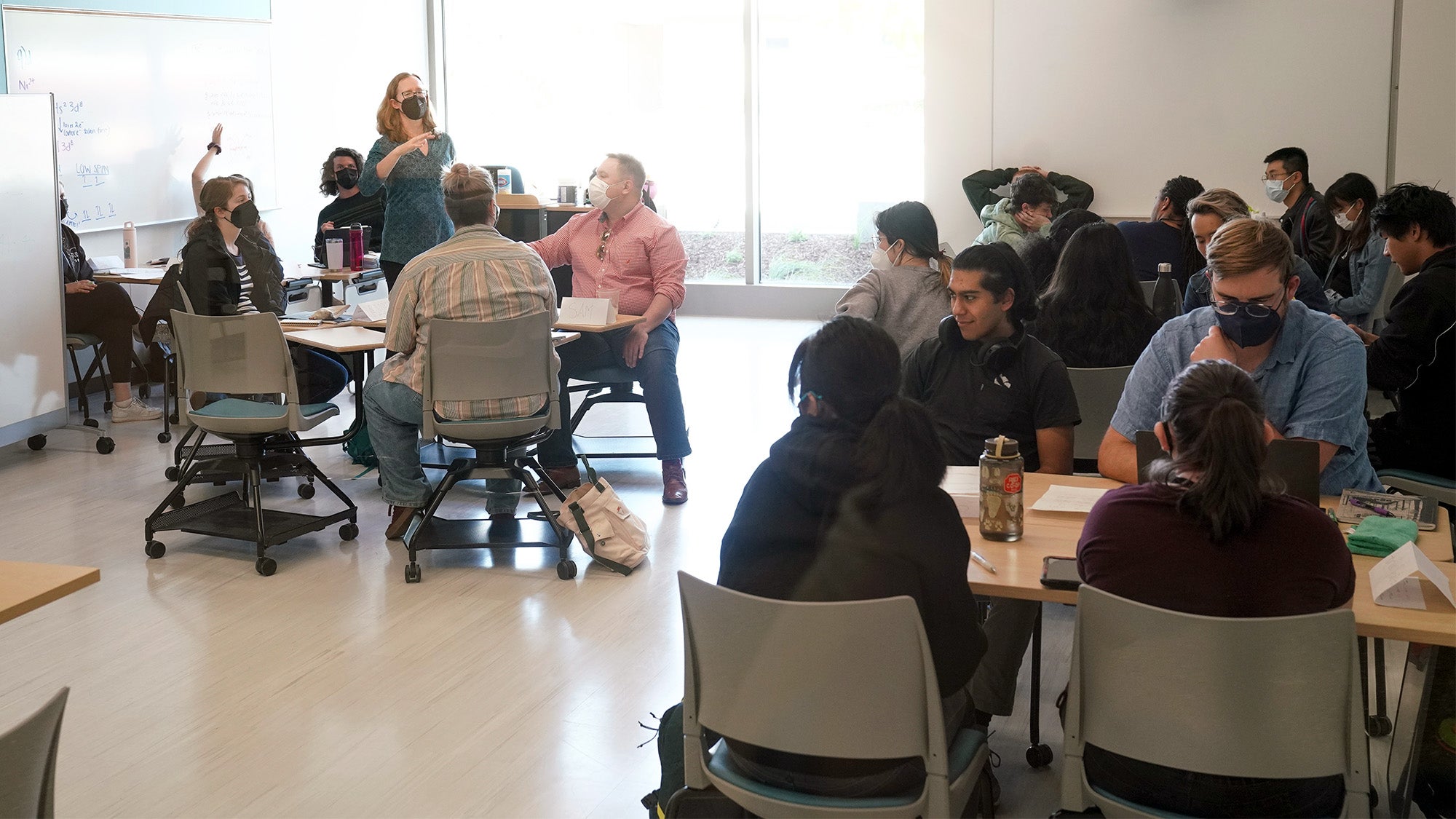
The TLC holds a five-part workshop series for faculty to become familiar with the building and features in the classrooms.
The workshops are:
- Introduction to the Teaching and Learning Complex
- Leveraging educational technologies in flexible teaching spaces
- Facilitating student interaction in the active learning classroom
- Managing student groups in the active learning classrooms
- Assessing student learning in the active learning classroom
Faculty and staff are encouraged to take part in this series, but it is not mandatory. “To complete the series, instructors attend all five workshop sessions over a five-week period,” Saichaie said. “We also encourage them to seek a Mid-Quarter Inquiry, which gives them an opportunity to get formative feedback from students on their learning experience.”
To learn more, visit the Center for Educational Effectiveness website, which offers many resources on teaching in the TLC.
AT A TLC TRAINING WORKSHOP
About 10 people attended an April 19 “Introduction to the Teaching and Learning Complex” workshop led by Saichaie, praising the layout and features of the building’s classrooms and discussing potential challenges to using the space.
As if to illustrate a more active learning environment, the workshop attendees were given two minutes to observe and “interact” with the space. They were then encouraged to share their observations.
One attendee called it “very conducive to collaborative learning,” while another noted: “It’s really open, when lots of places on campus are really cramped.”
Someone else complimented the giant whiteboard wall, and another liked the ability to adjust the room to a 360-degree setup.
Attendees then were tasked with listing opportunities as well as challenges instructors might face teaching in these modern classrooms. All agreed that “student engagement and involvement” were top opportunities, while one attendee said he imagined it would take time to develop new classroom activities for the space, which he considered daunting.
Saichaie presented a slide titled, “Common challenges with active learning classrooms,” which mentioned “navigating technology and the space,” “fostering student interaction,” and “assessing student learning.”
But, of course, Saichaie also offered solutions to the challenges such as “generating buy-in from students,” making incremental changes, small steps” and “demonstrating real-world relevance” to this new way of learning.
Media Resources
Sudhiksha Shanbhag Kota is a senior at UC Davis majoring in cognitive science. She works as a fellow with the Office of Strategic Communications.
